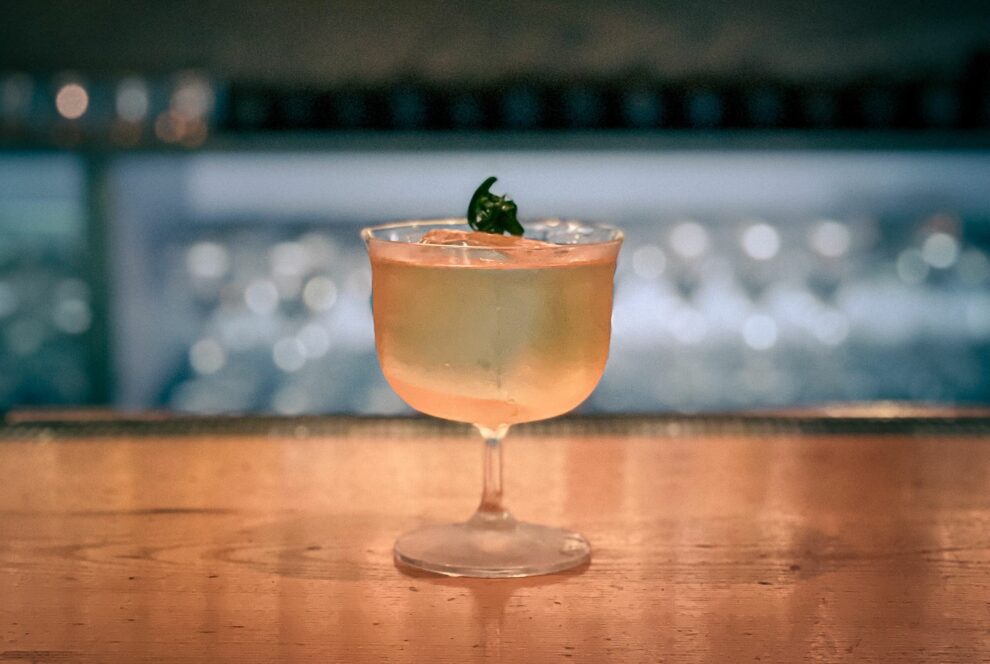Milk punches, N/A options and, of course, the espresso martini are all having a moment.
While the bar scene in Denver is constantly growing and evolving, it’s fair to say that the Mile High has hard-earned a place in the lexicon of cities with a rich cocktail culture. We have nationally and globally acclaimed bars like Yacht Club and Williams & Graham, as well as talent like Caroline Clark, who nabbed the Michelin Exceptional Cocktail Award in September for her work at the Wolf’s Tailor.
At establishments all over the city, members of the cocktail community continue to challenge one another and inspire with technique, creativity and collaboration. What’s trending in the world of cocktails is a reflection of that growth and evolution. There’s something for everyone, a fact that Westword celebrates every year with our list of the 100 bars we can’t live without.
Ahead of the release of the 2024 edition on November 22, we’re breaking down what local bar pros are currently stirring, shaking and serving to guests.

The ranch-flavored cocktail from Molotov.
Molly MartinSavory cocktails
Beverage programs are incorporating elements like mushrooms, condiments, tomatoes and other herbs and spices into cocktail development. Oftentimes, this goes in tandem with cross-utilization of ingredients from the kitchen, which both decreases waste and keeps thematic flavor and sensory elements harmonious. The culinary approach is a way for the bar team to collaborate with the kitchen and can yield unique, unexpected and delicious results in the world of umami, bitter or rich flavor combinations. A savory cocktail doesn’t have to be a meal in a glass, but it certainly can be.
“Savory cocktails are hard to get right, but that’s a big one in terms of bartenders having fun and experimenting with culinary techniques,” notes Josh Kohm, national food and beverage manager for the Numbers Holding Company.
At Molotov Kitschen + Cocktails, bartenders Andrew Swiatkowski and Andrew Booth have a penchant for savory cocktails, like a ranch libation made with parsley, chive and dill vodka that was fat-washed with buttermilk and lemon. “It turned out really clean and effortless and not too ‘ranchy,’ but you still got all those notes that you expect,” says manager Lindsey Marr.
“We’ve been playing with versions of classic builds that appeal to a more herbaceous, savory cocktail; the people who get it love it and are hooked for life,” Swiatkowski adds. “We use a culinary approach, and we always check with chef in terms of what’s in season.”

An edible glitter cocktail from Marmalade Lounge.
Carrie WalbridgeThe element of fun
While fun may have taken a hiatus during the pandemic, it’s back — and we’re reminded why it is so foundational in cocktail development. Fun is, and should be, an essential part of creating not just a cocktail, but an experience for a guest. Fun is a big part of the magic that is hospitality, and it can manifest itself in so many ways.
“I like the combination of bodega glassware and ingredients with fun colors. We’ve used rainbow carrot ribbons, cucumber ribbons, tiki-style garnishes, glitter and fire to add to the fun elements of our cocktails,” says Carrie Walbridge, bar manager at Marmalade Lounge in Arvada.
“I think one of the driving things is cocktails that are appealing visually and have marketability. People see something on Instagram and they go get it,” adds Brandon Anamier, product manager at Number 38. “We have one fun, special-looking drink on the menu at all times.”
“We see a mix of people that want fun, pretty cocktails and people who are adventurous. I like to use glitter, dehydrated oranges, coffee foams and other unique ingredients, as long as they serve a purpose and add to the cocktail,” notes Middleman bar manager Celeste Rangel-Ruiz.

Rooted Craft Kitchen’s cocktail menu includes many low-ABV options.
Molly MartinLow ABV and N/A
Drinks and spirits that have a lower alcohol by volume or no alcohol are more prevalent than ever. The non-alcoholic drinks market grew by 9 percent in 2022, according to Forbes, and is expected to grow annually by an estimated 3.9 percent. Colorado is second in the country in non-alcoholic beverage sales, behind only California, per NielsenIQ data. For those who still wish to imbibe, but at a lower ABV, cocktails made with amaro, sherry and fortified wines are popular and offer a great alternative.
“I see the rise of NA options not just here, but everywhere,” Anamier says. “In the past, you would go somewhere and they would pull out this one crusty NA beer. Now we order cases and cases, and that’s on top of the other NA spirits.”
“Low-ABV cocktails are asked for more, and sherry and fortified wines are becoming more relevant,” adds Improper City beverage director Austin Hay.
“More guests are ordering non-alcoholic cocktails. I have had several groups come to Lady Jane where everyone in the party enjoys our N/A options. Some of my favorite non-alcoholic brands are Lyre’s, Three Spirits and AMASS. These companies are leading the charge and doing amazing things,” says Lady Jane general manager and partner Stuart Weaver.

Dirty Laundry utilizes milk punches in many of its cocktails.
NosferatuneMilk punches
Turning a cocktail into a milk punch is a method of larger-scale drink batching, wherein milk or a milk alternative is incorporated into a citrus cocktail. The proteins in the milk bind to the bitter and astringent elements in the cocktail, and once they separate, you are able to fine-strain out the solids, leaving a silky, crystal-clear cocktail. The method is shelf-stable and efficient for high-volume bars, plus the mouthfeel and texture are exceptionally pleasing.
“We batch and use milk punches, oleos and teas to cram as many ingredients into one cocktail as possible while still getting people their drinks fast,” explains Anamier. “We have three to four draft cocktails on at a time, and make them in seven-gallon batches, up to 36 gallons in a week.”
“Milk punches are great,” adds Weaver. “I love the texture that milk brings to the drink, and the crystal-clear look of the clarification process. We also often utilize milk alternatives like coconut milk and oat milk for clarification for an added layer of flavor.”

The ever-popular espresso martini at Marmalade Lounge.
Jen MattioniThe espresso martini and ’90s cocktails
The espresso martini could certainly be in a category of its own, as it’s proven to be a cocktail with staying power. However, it has also helped catapult once-forgotten cocktails like the Apple-tini and Cosmopolitan back into the cocktail conversation.
“The espresso martini trend is still strong. I like the bars taking ’90s cocktails and trying to make them better by using modern techniques like clarifying or using a centrifuge,” Anamier says.
“Our nitro espresso martini is number three [in sales], and we sold 900 last month alone,” says Hay. “Another trend is bringing ’90s cocktails to the future. I see people leaning into elevating Apple-tinis, Cosmos and Long Islands.”
“Our guests are crushing espresso martinis. We are an espresso martini slut bar,” Walbridge confirms.

At the newly opened Oliver’s, guests can get a sampler of Negroni variations.
Molly MartinClassics, with some twists
A sign of a good cocktail bar is when it can not only master classic cocktails, but also manipulate them in ways that the result is equally — if not more — pleasing than the original. Technique, balance and understanding of classic cocktails must first be mastered before modifications can be made.
“I think it’s important to keep classics like the Old Fashioned and the martini in the loop,” says Molotov’s Marr. “It’s familiar to people, and you can make your own unique spin. Right now we have a sweeter, nuttier play on a Manhattan; we use a lot of pistachios and nuts. We also do a lot of in-house vodka infusions to add a unique element to our martinis and vodka cocktails.”
“We have a sparkling beet Negroni called Beets by Dre,” adds Walbridge. “It’s an earthy, vegetal homage to the Sbagliato.”
“I use the Mexican spirit Granada Vallet, which reminds me of an old aunt of Campari, for a Negroni variation. I use it with Odessa gin and make a chocolate infusion, and I add strawberry with the Vallet for tartness and bitterness, and orange for balance,” says Rangel-Ruiz.
“More bartenders are getting creative with the dirty martini,” notes Weaver. “At Lady Jane, we had one on the menu called Dirty Little Secret that mixed an assortment of spirits from the back bar to create a ‘dirty mix’ that didn’t have any actual brine.”

A Chicago Handshake: an Old Style and a shot of Malört.
TrashHawkMalört
When this wormwood spirit from Chicago arrived in Denver over a decade ago, it was largely a novelty (Google “Malört Face” videos if you need a bit of entertainment). Now, though, it’s gaining a lot of traction in the world of cocktails. While most still partake of it in a shot, many bars are incorporating the bitter spirit into cocktails, yielding interesting results.
“We sell about three cases of Malört a month,” Hay reports. “We sell more Malört than most whiskeys. People who know what it is buy shots for the whole table whether the table wants them or not. It has a cult following among bartenders.”
“We have a Malört cocktail called Oh My Lort — people fucking love it,” adds Rangel-Ruiz. “It has a dehydrated charcoal lemon wheel. At the end, it leaves a trail of toxic waste and tastes like a delicious dumpster fire.”
Source : Westword































